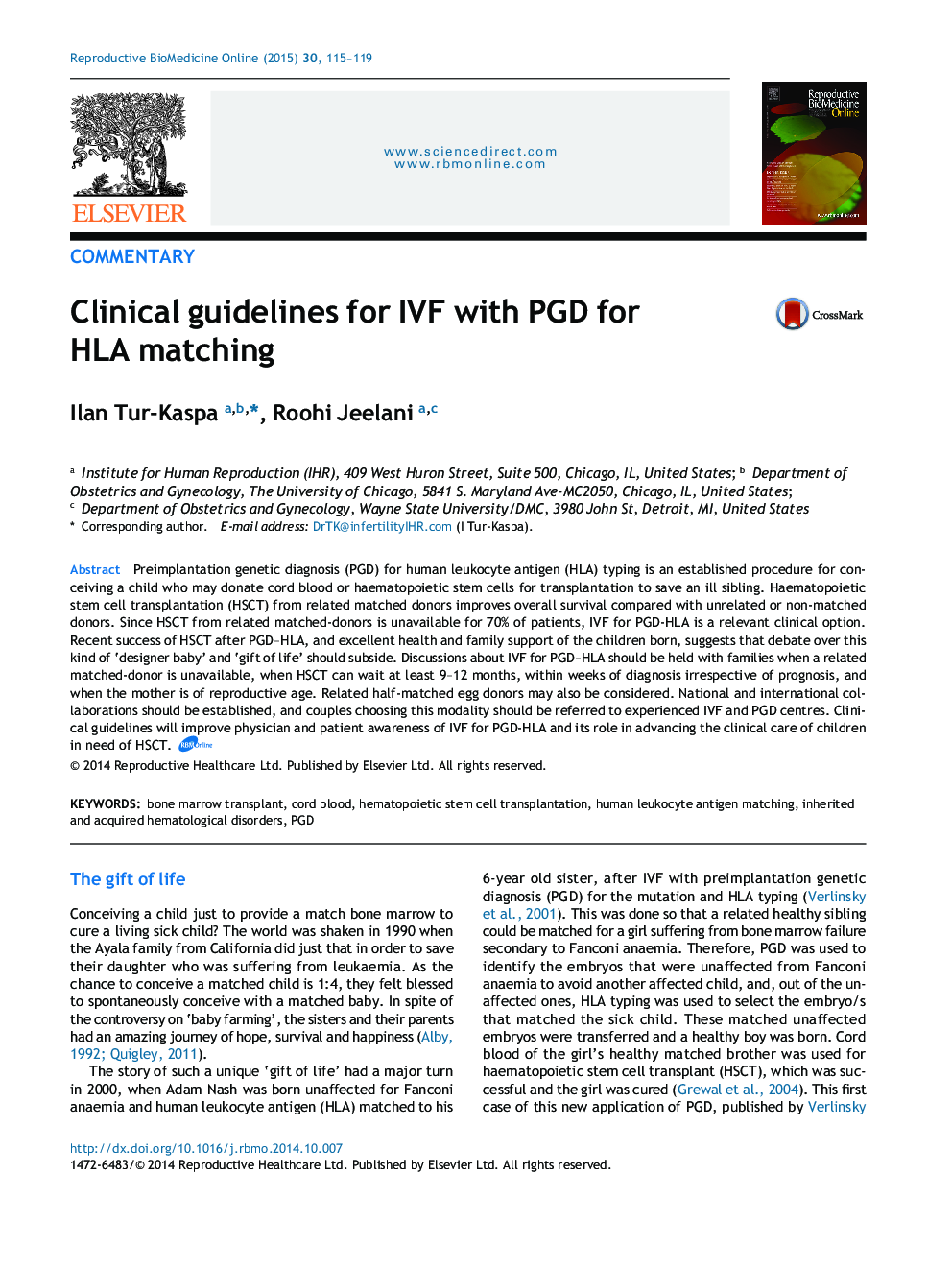| Article ID | Journal | Published Year | Pages | File Type |
|---|---|---|---|---|
| 6188833 | Reproductive BioMedicine Online | 2015 | 5 Pages |
Preimplantation genetic diagnosis (PGD) for human leukocyte antigen (HLA) typing is an established procedure for conceiving a child who may donate cord blood or haematopoietic stem cells for transplantation to save an ill sibling. Haematopoietic stem cell transplantation (HSCT) from related matched donors improves overall survival compared with unrelated or non-matched donors. Since HSCT from related matched-donors is unavailable for 70% of patients, IVF for PGD-HLA is a relevant clinical option. Recent success of HSCT after PGD-HLA, and excellent health and family support of the children born, suggests that debate over this kind of 'designer baby' and 'gift of life' should subside. Discussions about IVF for PGD-HLA should be held with families when a related matched-donor is unavailable, when HSCT can wait at least 9-12 months, within weeks of diagnosis irrespective of prognosis, and when the mother is of reproductive age. Related half-matched egg donors may also be considered. National and international collaborations should be established, and couples choosing this modality should be referred to experienced IVF and PGD centres. Clinical guidelines will improve physician and patient awareness of IVF for PGD-HLA and its role in advancing the clinical care of children in need of HSCT.
